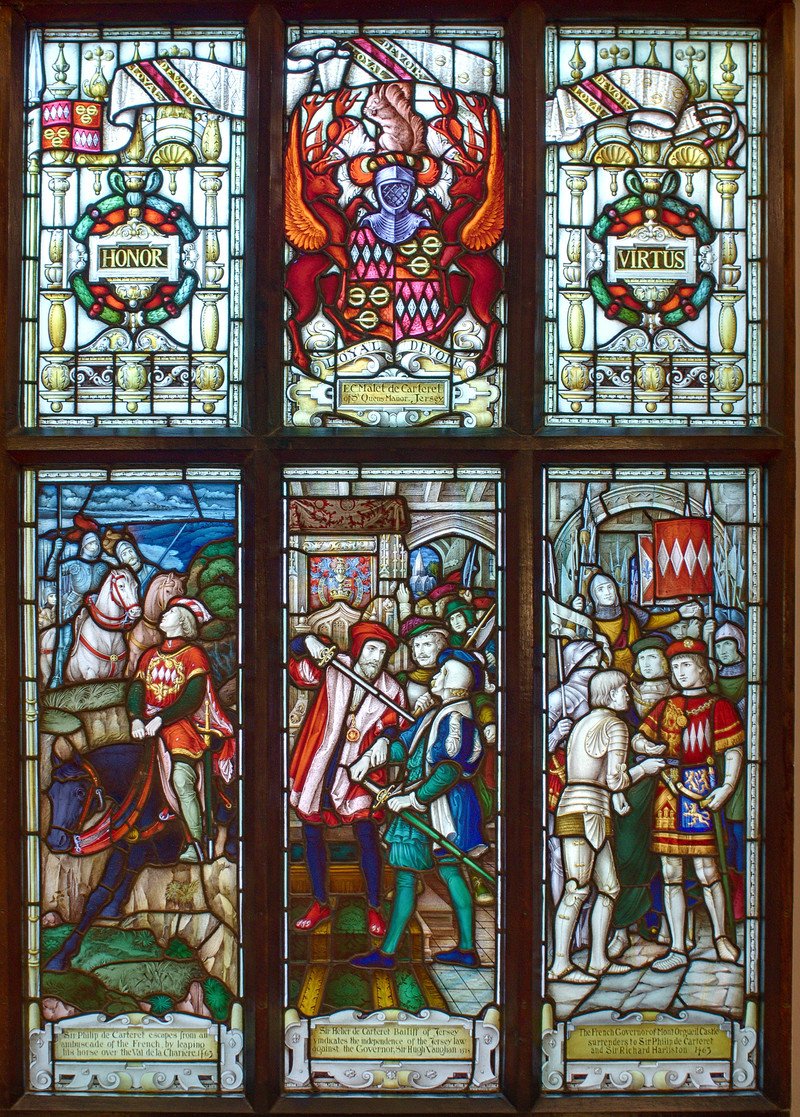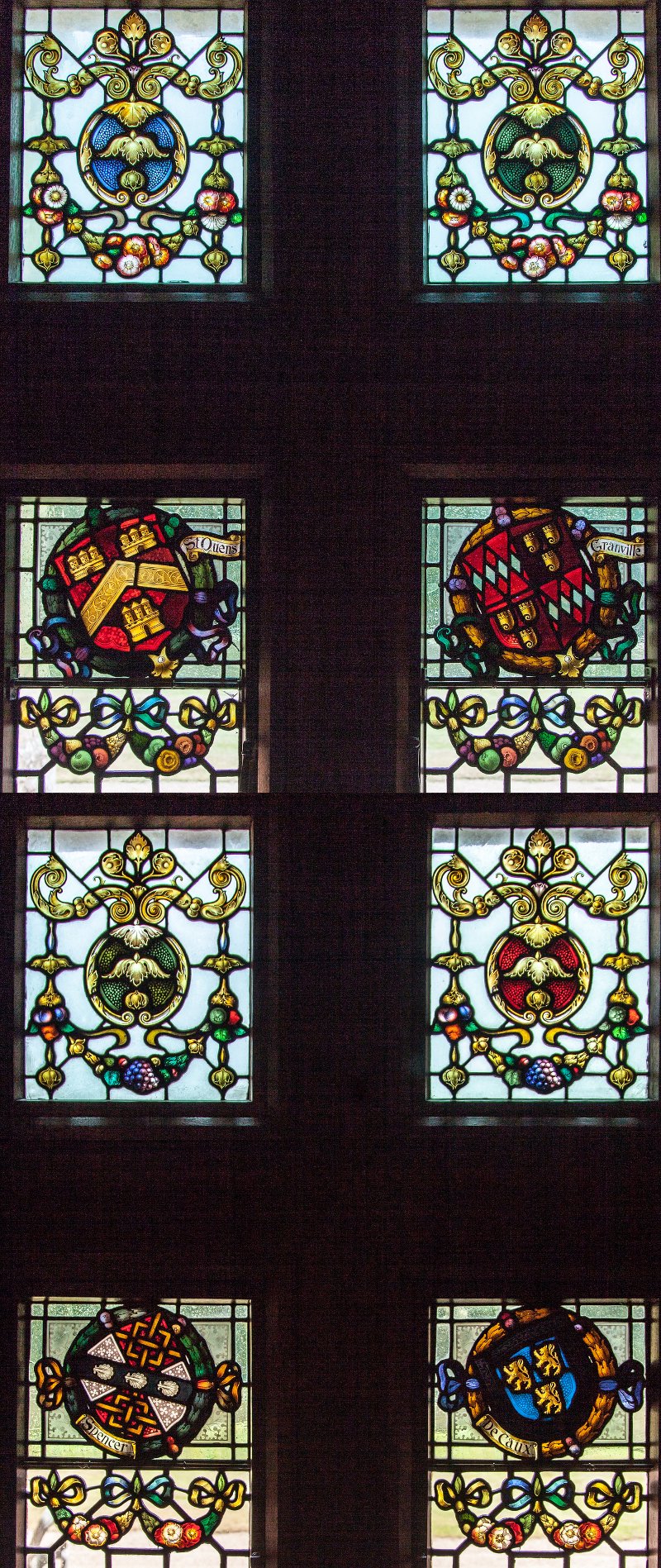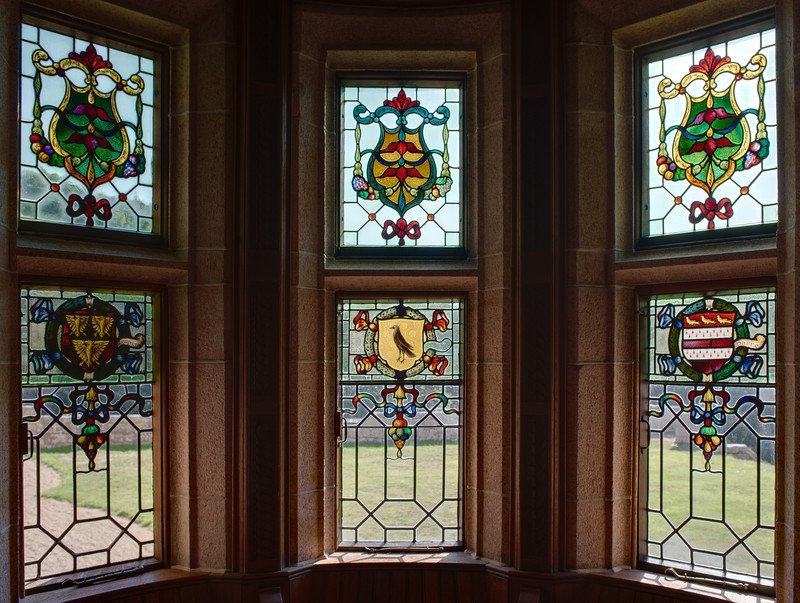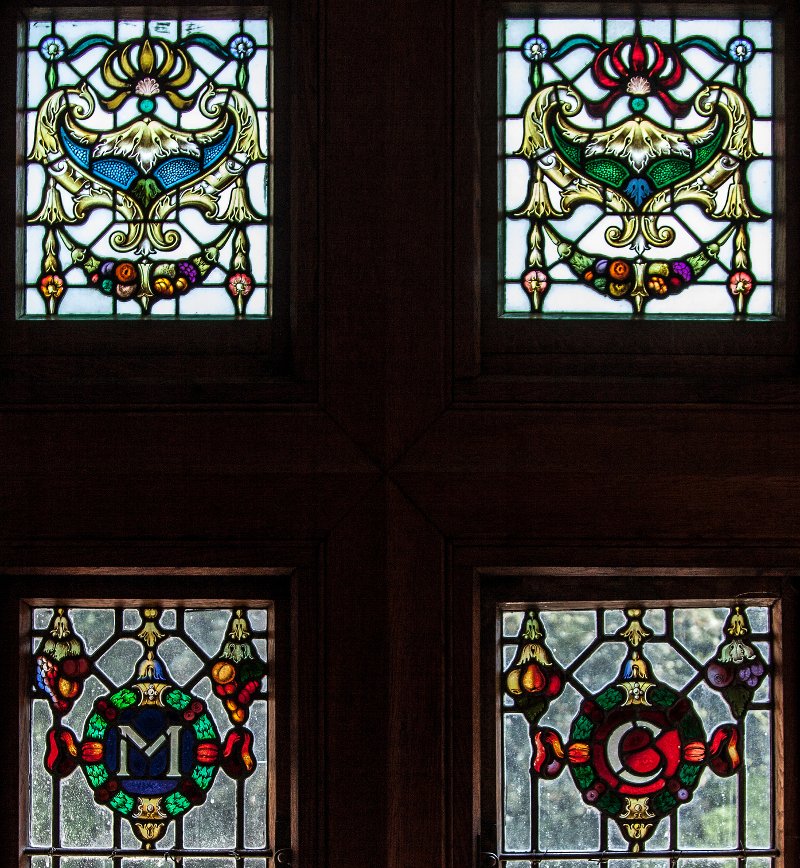Passage window
A large rectangular window in a passage opposite a panelled drawing-room.
It is divided into six panels of which the three upper ones are designed around the coat of arms of the Malet de Carteret Family. The surrounds are lavishly filled with wreaths, garlands, decorative devices and the family motto, in Latin and French, on scrolls and banners: HONOR, VIRTUS, LOYAL DEVOIR (Honour, Virtue and Loyal Duty).
Three lower panels depict incidents in the history of the Island. The centre panel shows a moment in 1518 when the Bailiff of Jersey, Sir Helier de Carteret, vindicated the independence of Jersey law against the English Governor, Sir Hugh Vaughan. This is a particularly crowded and colourful composition with many armed men surrounding the protagonists, against a background of a throne decorated with the Royal Coat of Arms. Through the open door, there is a glimpse of Grouville Parish Church viewed from Grouville Court reminding us that the Court was sitting in that Parish because the plague was raging in St Helier.
The side panels illustrate incidents during the French occupation of the Island in the middle of the fifteenth century. On the left, Sir Philip de Carteret escapes from a French ambuscade by leaping his horse over Val de la Charrière in 1463. This is a dramatic illustration of chivalrous bravery, centred on the leap of the powerful horse. The darkness of his black coat is made all the more striking by the scarlet harness. In the right-hand panel, under a Norman arch, the French Governor of Mont Orgueil Castle surrenders its key to a youthful Sir Philip de Carteret and Sir Richard Harliston in 1463. Sir Philip, very striking in a red tabard bearing his family arms, is surrounded by soldiers in armour, beneath a forest of lances, halberds and banners.
The window is signed H.T Bosdet but the accompanying date is partly obscured.




